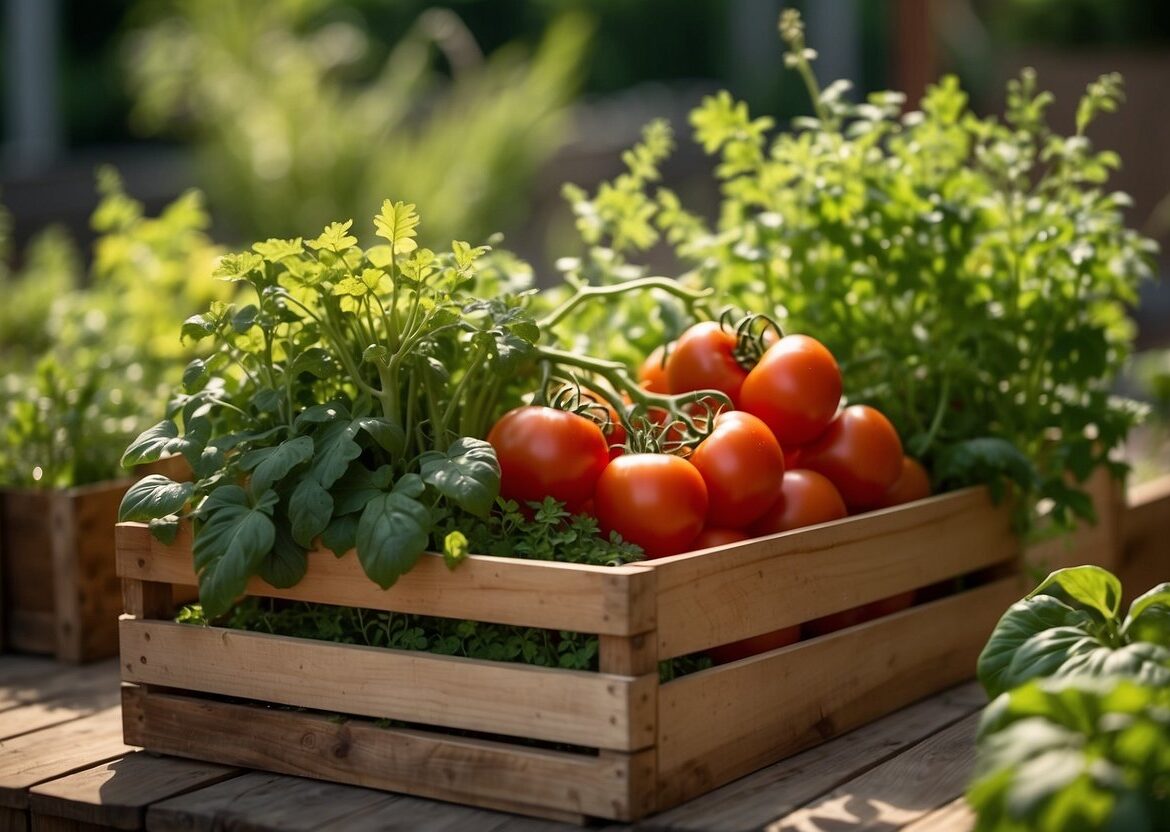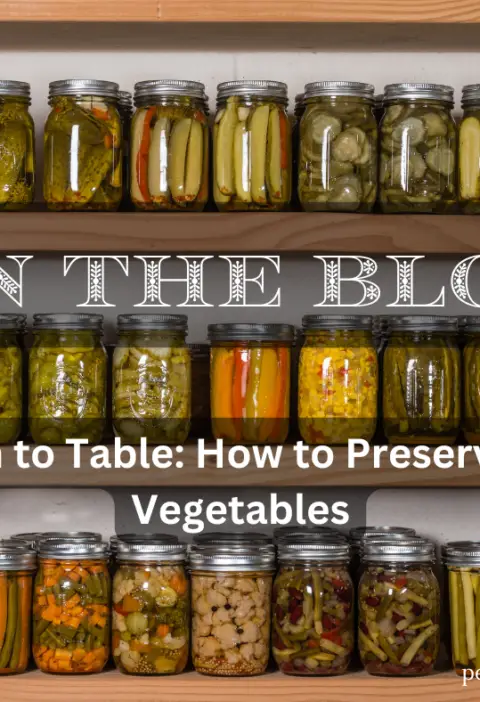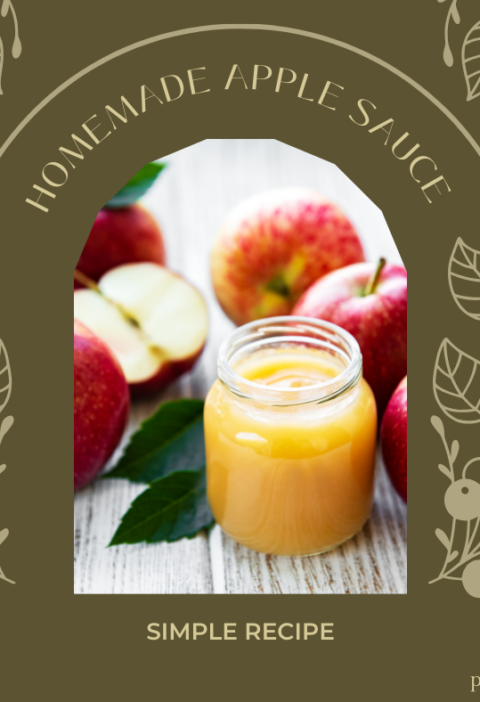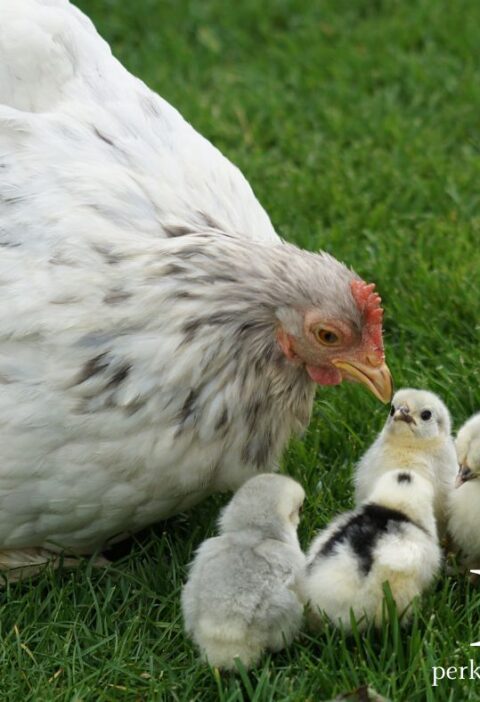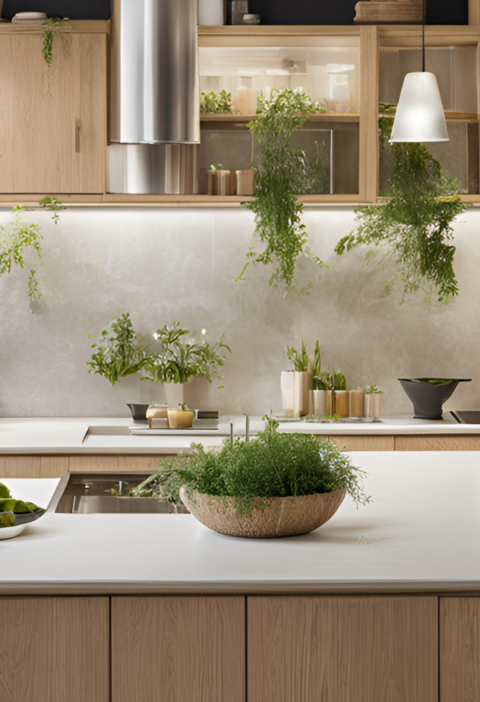Growing your own vegetables is a great way to save money, eat healthier, and reduce your carbon footprint. But what if you don’t have a lot of space?
Fortunately, you don’t need a large backyard to grow your own veggies. In fact, you can grow a one square-foot vegetable garden right on your balcony or patio.
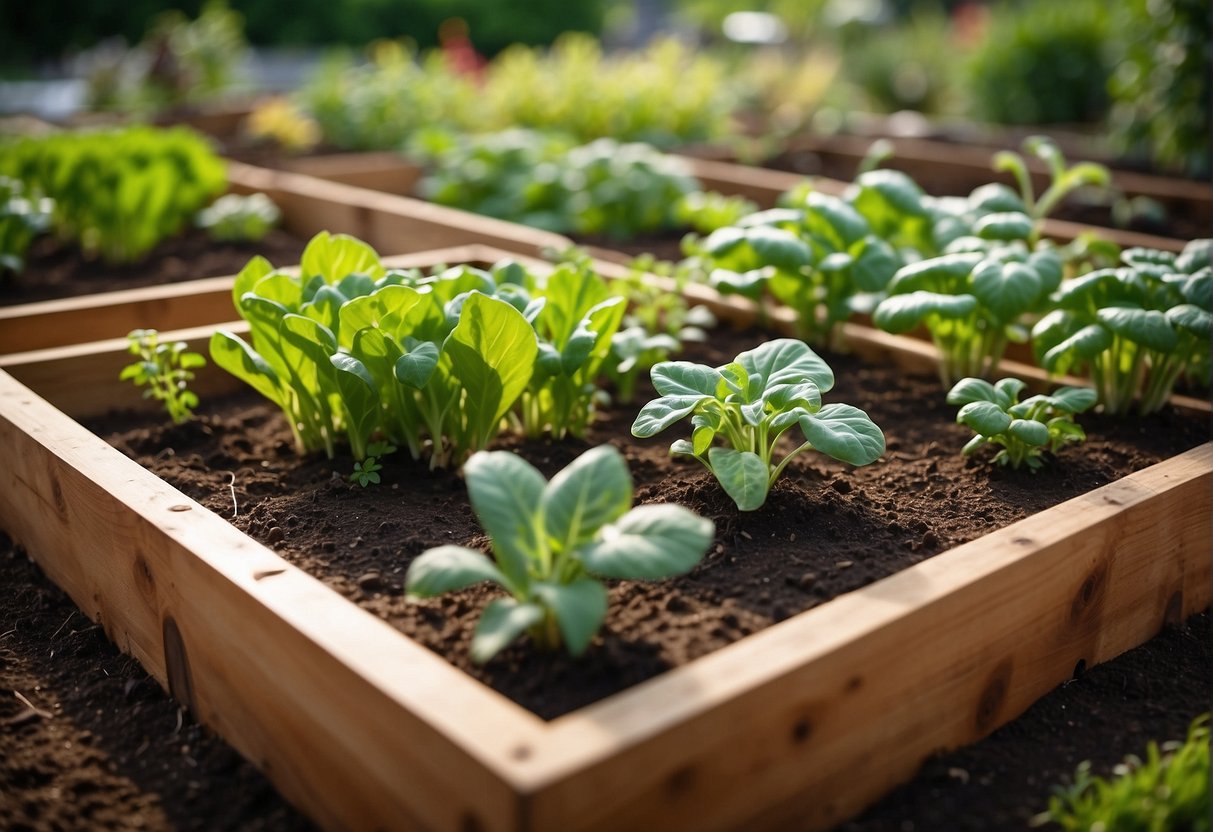
With a one square-foot garden, you can grow a surprising amount of food in a very small space. The key is to choose the right plants and use the right techniques.
In this article, I’ll show you how to get started with your own one square-foot vegetable garden. Whether you’re a beginner or an experienced gardener, you’ll find everything you need to know to grow your own fresh, healthy produce right at home. So let’s get started!
Choosing the Right Location
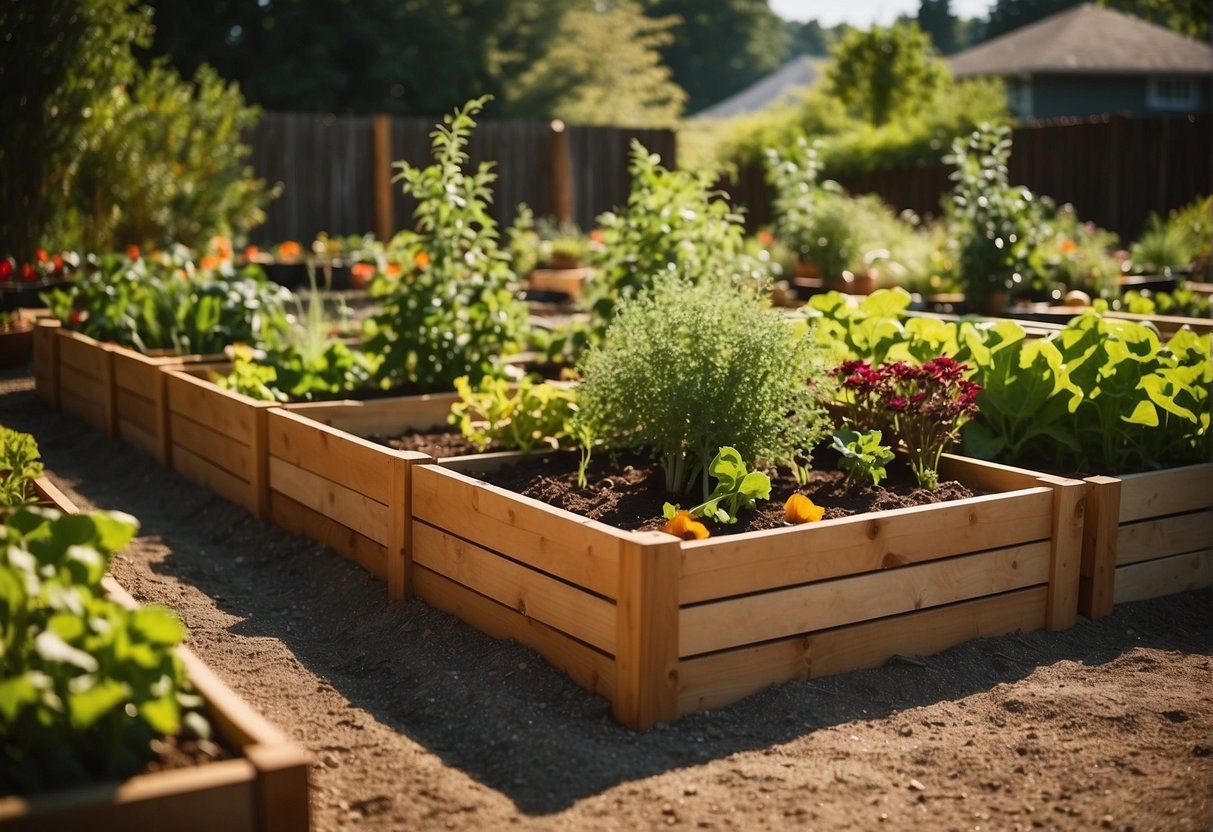
When it comes to growing a one square-foot vegetable garden, choosing the right location is essential to ensure your plants thrive. Here are some factors to consider when selecting the perfect spot for your garden.
Assessing Sunlight and Shade
The amount of sunlight your garden receives is crucial for the growth and development of your plants. Vegetables typically require at least six hours of direct sunlight each day to thrive.
Therefore, it’s important to assess the amount of sunlight your chosen location receives throughout the day. To do this, you can simply observe the area and note which parts receive the most sunlight and which are shaded.
Keep in mind that the amount of sunlight your garden receives can vary depending on the time of year and the angle of the sun. If your garden is in an area that receives intense afternoon heat, you may need to provide some shade to prevent your plants from wilting.
Evaluating Soil Quality
The quality of your soil is another critical factor to consider when choosing a location for your one square-foot vegetable garden. You want to make sure the soil is rich in nutrients and has good drainage to promote healthy plant growth.
To evaluate the quality of your soil, you can perform a simple soil test. This involves digging a small hole in the ground and examining the soil’s texture, color, and smell.
If the soil is dark, crumbly, and has a pleasant earthy smell, it’s likely to be rich in nutrients. If the soil is hard, compacted, and has a sour odor, it may be lacking in nutrients and require some amending.
In addition to soil quality, you’ll also want to consider the location’s accessibility to water. Your plants will need regular watering, so it’s important to choose a spot that’s within reach of a water source.
Planning Your One Square-Foot Garden
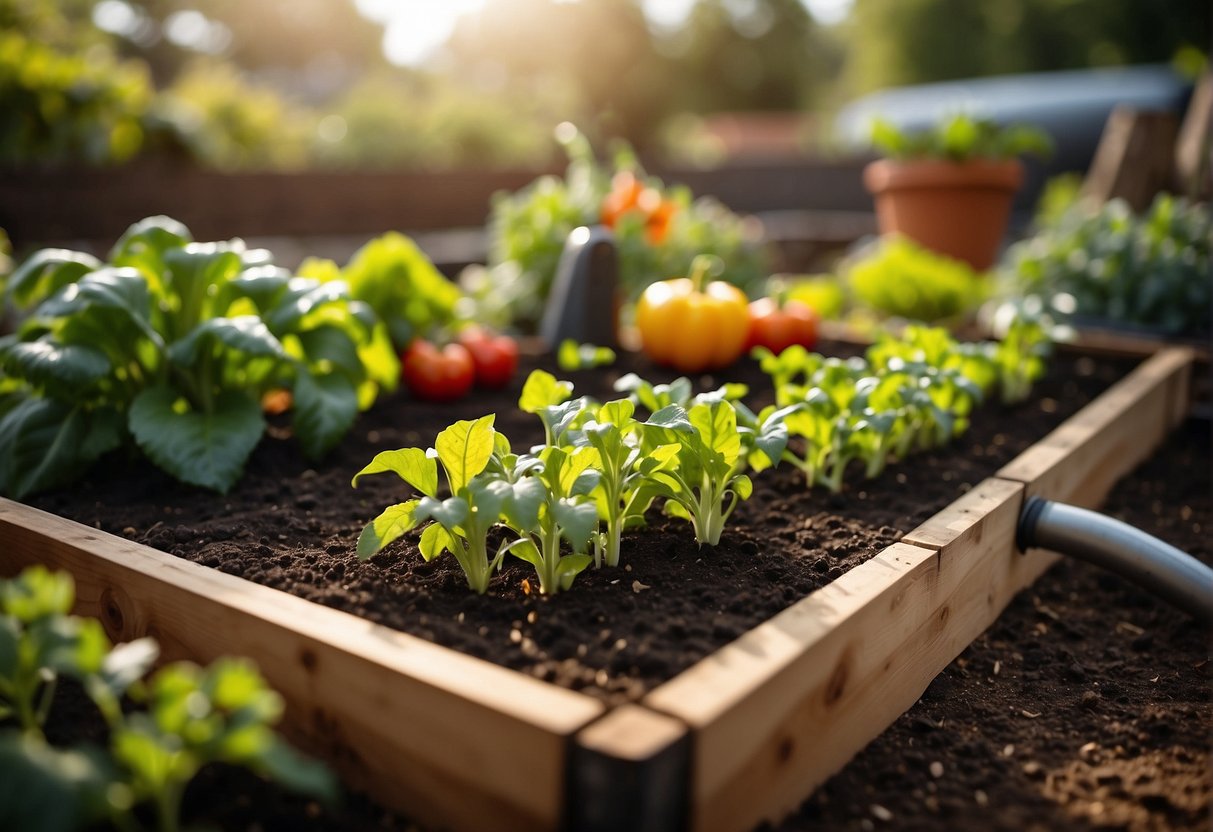
When it comes to starting a one square-foot vegetable garden, planning is key. Proper planning can help ensure that your garden is successful and that you get the most out of your limited space. In this section, I will cover two important aspects of planning your one square-foot garden: selecting suitable vegetables and designing the layout.
Selecting Suitable Vegetables
When selecting vegetables for your one square-foot garden, it is important to choose plants that are well-suited to small spaces. Some vegetables that work well in small gardens include:
- Lettuce
- Radishes
- Carrots
- Spinach
- Kale
- Chard
- Herbs (such as basil, parsley, and cilantro)
It’s also important to consider the growing season and the amount of sunlight your garden receives. Some vegetables, like lettuce and spinach, prefer cooler temperatures and can be grown in the spring or fall. Other vegetables, like tomatoes and peppers, require more warmth and sunlight, and are best grown during the summer months.
Designing the Layout
Once you have selected the vegetables you want to grow, it’s time to design the layout of your garden. One of the benefits of a one square-foot garden is that it allows you to grow a variety of plants in a small space. Here are a few tips for designing your garden:
- Use a grid system: Divide your garden into one square-foot sections using a grid system. This will help you keep track of where each plant is located and make it easier to care for your garden.
- Companion planting: Consider planting vegetables together that have similar growing requirements. For example, lettuce and radishes can be planted together because they both prefer cooler temperatures and grow quickly.
- Vertical
gardening : If you are short on space, consider using trellises or stakes to grow plants vertically. This can help you maximize your space and increase your yield.
Preparing the Garden Space

To start your one square-foot vegetable garden, you need to prepare the garden space properly. This is a crucial step that will determine the success of your garden. In this section, I will guide you through the necessary steps to prepare your garden space.
Clearing and Sectioning Area
The first step in preparing the garden space is to clear the area. Remove any weeds, rocks, or debris that might be in the way. You can use a garden hoe, rake, or shovel to clear the area.
Once you have cleared the area, section it off into one square-foot plots using stakes and string. This will help you keep track of your plants and ensure that they have enough space to grow.
Soil Preparation and Enrichment
The second step in preparing the garden space is to prepare the soil. Start by testing the soil pH level. You can do this by purchasing a soil testing kit from your local garden center.
Once you know the pH level, you can adjust it accordingly. Vegetables grow best in soil with a pH level between 6.0 and 7.0.
Next, add organic matter to the soil. This will help improve soil structure and provide nutrients for your plants. You can add compost, aged manure, or leaf mold to the soil.
Spread a layer of organic matter over the soil and mix it in with a garden fork or tiller.
Finally, add a balanced fertilizer to the soil. This will provide your plants with the necessary nutrients they need to grow. You can use a granular or liquid fertilizer. Follow the instructions on the package for the correct application rate.
Planting Your Vegetables

Sowing Seeds
When you’re ready to plant your vegetable garden, start by sowing your seeds directly into the soil. Make sure the soil is loose and well-drained. You can also add compost or other organic matter to enrich the soil.
When sowing your seeds, follow the instructions on the seed packet for the correct depth and spacing. Some seeds may need to be covered with soil, while others need to be left on the surface.
After sowing your seeds, water them gently and keep the soil moist until the seeds germinate. This may take anywhere from a few days to a few weeks, depending on the type of vegetable.
Transplanting Seedlings
If you prefer to start your vegetables indoors, you can transplant the seedlings into your one square-foot garden once they have a few sets of true leaves.
Before transplanting, make sure the soil in your garden is loose and well-drained. Dig a hole that is slightly larger than the root ball of the seedling.
Gently remove the seedling from its container and place it in the hole. Cover the roots with soil and gently press down around the base of the plant. Then, water the seedling thoroughly to help it settle into its new home.
Make sure to space your seedlings according to the instructions on the seed packet, as overcrowding can lead to stunted growth and disease.
Garden Maintenance
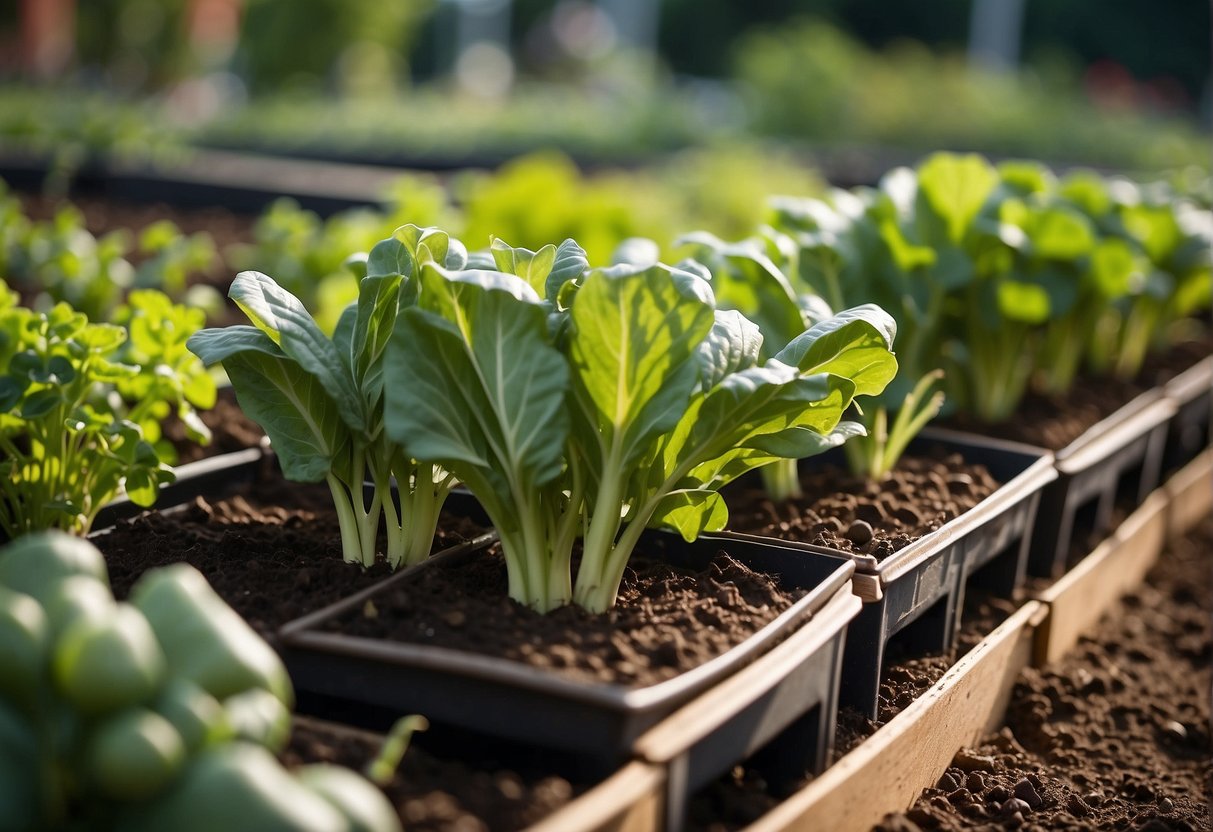
Watering Techniques
One of the most important aspects of maintaining a one square-foot vegetable garden is proper watering techniques.
As a gardener, I know that watering plants is not a one-size-fits-all approach. Each plant has its own watering needs, and it’s important to understand those needs to avoid over or under-watering.
To ensure your plants receive the right amount of water, it’s important to check the soil moisture level regularly. Stick your finger about an inch into the soil, and if it feels dry, it’s time to water.
When watering, make sure to water the base of the plant and avoid getting water on the leaves, as this can lead to disease and fungal growth.
Weed Control
Weeds can quickly take over a one square-foot vegetable garden if not properly managed. As a gardener, I know that prevention is key to controlling weeds.
One way to prevent weeds is to lay down a layer of mulch around your plants. This will help to suppress weed growth and also retain moisture in the soil.
When weeds do appear, it’s important to remove them as soon as possible. Pulling weeds by hand is the most effective method, but if you have a large garden, a hoe or cultivator can be used to quickly remove weeds.
Pest Management
Pests can be a major problem for any vegetable garden, but with proper management, they can be controlled. As a gardener, I know that prevention is key to managing pests.
One way to prevent pests is to keep your garden clean and tidy. Remove any dead or decaying plant material, as this can attract pests.
If pests do appear, it’s important to identify the pest and choose the appropriate control method.
Organic methods such as companion planting, crop rotation, and handpicking can be effective in controlling pests. If chemical control is necessary, always follow the instructions on the label and use the appropriate protective gear.
Harvesting and Storage
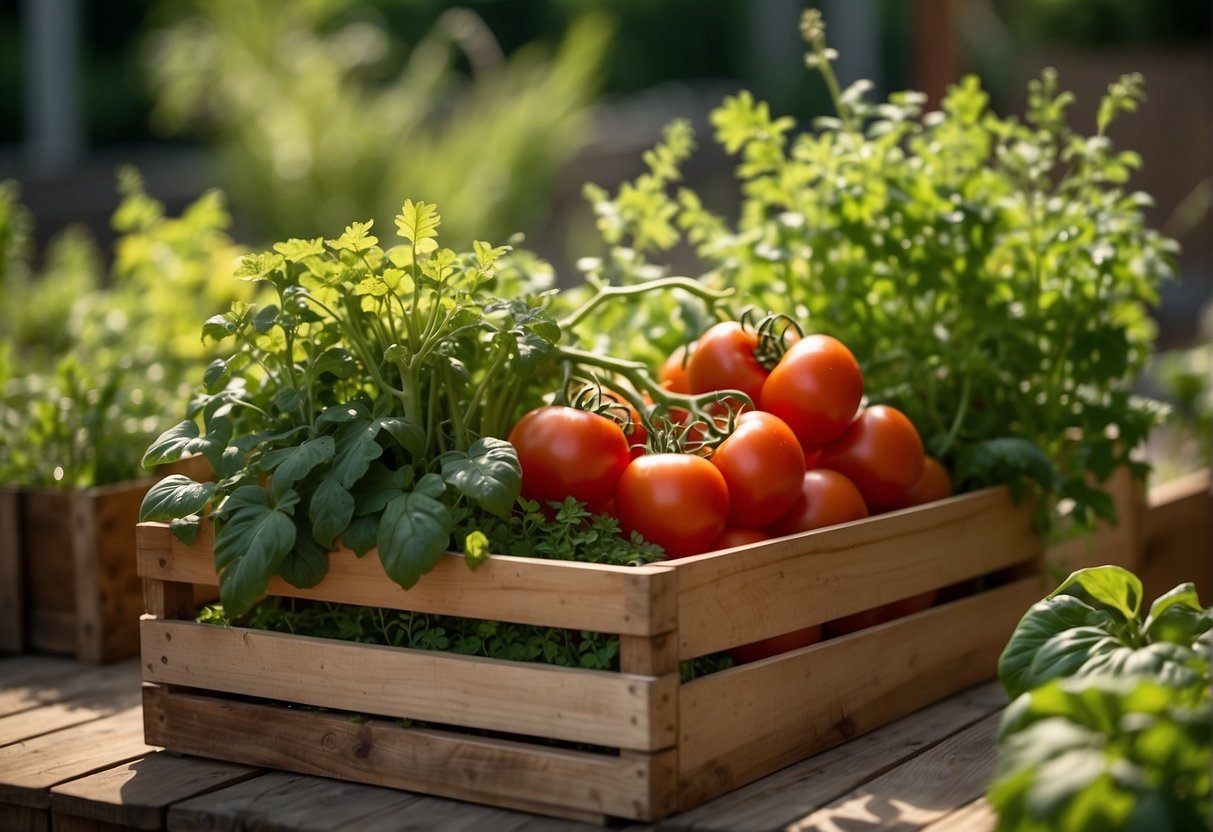
Picking Vegetables at Peak Ripeness
When it comes to harvesting your vegetables, timing is everything. Picking your vegetables at their peak ripeness will ensure that they are full of flavor and nutrients.
For example, tomatoes should be picked when they are fully ripe and have a bright red color. If you wait too long, they can become overripe and lose their flavor. On the other hand, cucumbers should be harvested when they are still small and firm to ensure that they are crisp and juicy.
To determine if your vegetables are ready to be picked, look for visual cues such as color, size, and texture.
You can also gently squeeze the vegetables to see if they are firm and ripe. If they are soft or squishy, they may be overripe and past their prime.
Proper Storage Methods
Once you have harvested your vegetables, it is important to store them properly to ensure that they stay fresh and flavorful. Here are some tips for storing your vegetables:
- Store root vegetables such as carrots and potatoes in a cool, dark place such as a pantry or cellar. This will help to prevent them from sprouting or rotting.
- Leafy greens such as lettuce and spinach should be stored in the refrigerator in a plastic bag or container. Make sure to remove any excess moisture before storing them to prevent wilting.
- Tomatoes should be stored at room temperature and away from direct sunlight. Storing them in the refrigerator can cause them to lose their flavor and become mealy.
- Peppers and cucumbers can be stored in the refrigerator in a plastic bag or container.
Seasonal Considerations

Adjusting for Temperature Changes
As the seasons change, the temperature in your one square-foot vegetable garden will affect the growth of your plants. It’s important to adjust your planting schedule and care routine accordingly.
In the spring, when temperatures are still cool, start with crops that can tolerate the cold, such as peas, spinach, and lettuce.
As the weather warms up, you can transition to warm-weather crops like tomatoes and peppers.
During the summer, keep an eye on the temperature and water your plants regularly to prevent them from drying out.
You can also use shade cloth or other methods to protect your plants from the intense sun.
In the fall, you can plant cool-weather crops again, such as broccoli, cauliflower, and kale. Be sure to harvest your warm-weather crops before the first frost.
Extending the Growing Season
If you want to extend your growing season, there are a few things you can do.
One option is to use a cold frame or hoop house to protect your plants from the cold. You can also use row covers or blankets to keep your plants warm.
Another option is to plant crops that are specifically bred for cooler weather, such as certain varieties of lettuce, spinach, and kale.
These plants can tolerate colder temperatures and will continue to grow even as the weather gets cooler.
Finally, you can also try planting crops at different times throughout the season to stagger your harvest and keep fresh produce coming in.
Troubleshooting Common Issues

Dealing with Limited Space
One of the biggest challenges of a one square-foot vegetable garden is limited space. If your plants are overcrowded, they may not get enough nutrients, water, or sunlight.
To avoid this, it’s important to choose plants that are suitable for small spaces and plant them at the right distance from each other.
If you’re short on space, consider using vertical
Addressing Nutrient Deficiencies
Nutrient deficiencies can lead to poor growth and low yield. To avoid this, it’s important to ensure that your soil has the right balance of nutrients.
You can do this by adding organic matter such as compost or manure to the soil before planting.
If your plants are showing signs of nutrient deficiencies, you can use fertilizers to supplement their diet.
However, it’s important to use the right type of fertilizer and apply it in the right amount. Over-fertilizing can lead to burning of the roots and damage to the plants.
Resolving Poor Growth
Poor growth can be caused by a number of factors such as pests, diseases, or environmental stress.
To identify the cause of poor growth, observe your plants closely and look for signs of damage or stress.
If pests or diseases are the cause of poor growth, you can use organic or chemical pesticides to control them. However, use these products carefully and follow the instructions on the label.
If environmental stress is the cause of poor growth, you can take steps to mitigate it.
For example, if your plants are not getting enough sunlight, you can move them to a sunnier location. If they are getting too much sun, you can provide shade using a shade cloth or by moving them to a shadier location.
